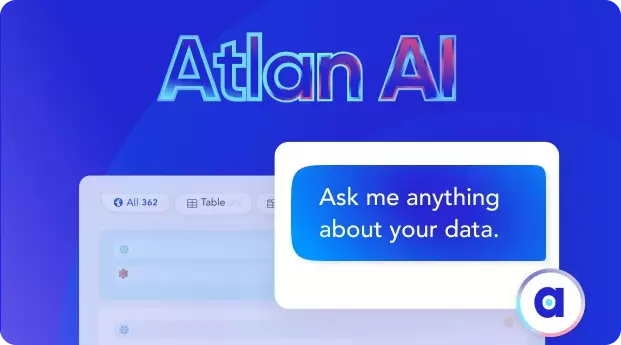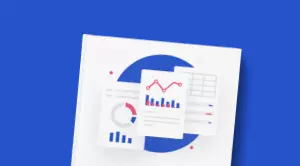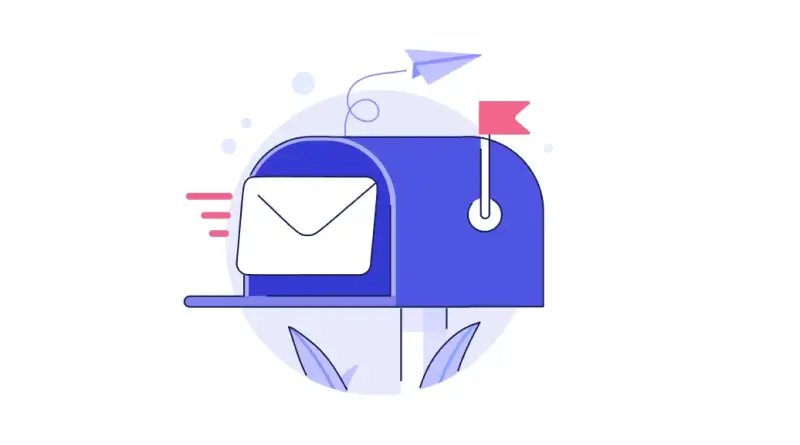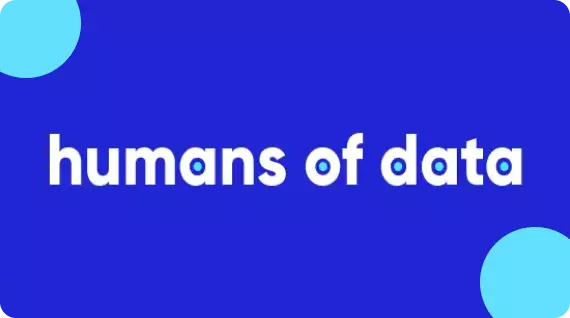Data Governance Program: 10 Steps to Build One!

Share this article
A data governance program is a set of procedures and guidelines that detail how data is to be properly managed, accessed, and used. It involves establishing principles, policies, procedures, and roles that define who can take what action, upon what data, in what situations, using what methods.
The goal of a data governance program is to provide a framework that allows for effective data management and usage across the organization, while ensuring quality, availability, integrity, security, usability, and compliance with relevant laws or regulations.
Modern data problems require modern solutions - Try Atlan, the data catalog of choice for forward-looking data teams! 👉 Book your demo today
Building a robust data governance program is no longer a choice; it is an imperative for organizations aiming to thrive in the data-driven era. But what does it take to create a data governance program?
In this article, we will understand:
- What is the meaning of data governance?
- The objectives of a data governance program
- What are the steps to setup a data governance program?
- What is a data governance charter and what all it consists of?
- When should you develop a data governance program?
- What are the 4 pillars of a data governance program?
Ready? Let’s dive in!
Table of contents #
- What is a data governance program and what should be included in it?
- 9 Prerequisites of a data governance program
- Objectives of a data governance program
- 10 Steps to setup a data governance program
- Impact of a well-defined data governance program on critical business outcomes
- Example of a data governance program: A case study
- What is a data governance program charter and what does it consist of?
- What is the right time to create a data governance program?
- What are the 4 pillars of a data governance program?
- Books and resources
- Rounding it up all together
- Data governance program: Related reads
What is a data governance program and what should be included in it? #
A robust data governance program helps define and implement policies, procedures, and controls to ensure the quality, security, and compliance of data throughout its lifecycle.
Building a scalable and sustainable data governance program involves various aspects that focus on managing data quality, data privacy, data accessibility, and data usage.
Here’s what you should not miss out:
- Establish clear goals
- Understand your data landscape
- Define data governance policies
- Implement data stewardship
- Technology and tools
- Education and training
- Continuous improvement
- Data privacy and security
- Collaboration
Let us look into each of the above aspects in detail:
1. Establish clear goals #
Understand what you want to achieve with your data governance program. This could be anything including:
- Compliance with regulations
- Improved data quality
- Better decision-making
- Ensuring that your data is an asset rather than a liability.
2. Understand your data landscape #
Map out your organization’s data landscape, including:
- Different data sources
- Types of data
- How it flows through your organization
This understanding is crucial to developing appropriate data governance strategies.
3. Define data governance policies #
Establish policies for how data should be handled in your organization, including:
- Rules for data access
- Data sharing
- Data quality
- Data privacy
These policies should be communicated clearly and enforced consistently.
4. Implement data stewardship #
Identify data stewards who will be responsible for managing and enforcing your data governance policies. These individuals should have a deep understanding of your organization’s data and its importance to your business processes.
5. Technology and tools #
Implement data governance tools that can automate tasks like:
Look for tools that can scale as your organization grows and are adaptable to changing needs and requirements.
6. Education and training #
Educate your team about the importance of data governance and how they can contribute to it. Provide ongoing training to ensure everyone stays up-to-date with your data governance policies and procedures.
7. Continuous improvement #
Regularly evaluate and update your data governance program to ensure it remains effective. Use key performance indicators (KPIs) to measure your program’s effectiveness and make necessary improvements.
8. Data privacy and security #
Comply with all relevant data privacy and security regulations. This not only includes local regulations but also international ones if your organization operates globally.
9. Collaboration #
As you’re in a fast-growing industry, it’s essential to collaborate with other industry players to create standard data models and governance strategies. This not only helps the industry as a whole but also benefits your organization by reducing complexities and inconsistencies in your data.
Remember that data governance is not a one-off project but a continuous process. It should evolve as your organization grows and as new data-related challenges and opportunities emerge. Building a scalable and sustainable data governance program requires ongoing commitment and investment. It can also provide significant benefits for your organization.
9 Prerequisites of a data governance program #
In this section, we will learn more about the above prerequisites of a robust data governance program in more detail:
1. Establish clear goals #
A goal for a data governance program could be to improve the accuracy of business analytics. This could involve reducing the frequency of missing or inaccurate data in your reports.
By clearly defining this goal, you can design governance policies and procedures that focus on improving data collection and validation processes to meet this goal.
2. Understand your data landscape #
A retail business, for instance, might have sales data coming from brick-and-mortar stores, an online website, and various e-commerce platforms. This data might be stored in different databases and have different formats.
Understanding this landscape allows the business to design a governance program that ensures all this data is properly managed and integrated.
3. Define data governance policies #
An example of a policy could be that any data used in external reports must first be reviewed and approved by a data steward. This ensures that the data is accurate and helps prevent potential issues like releasing incorrect or sensitive data.
4. Implement data stewardship #
In a healthcare setting, a data steward might be responsible for ensuring that patient data is correctly entered into the system and that it’s used appropriately.
This person would also be responsible for handling any issues that arise, such as correcting inaccuracies or addressing privacy concerns.
5. Technology and tools #
For example, a data governance tool could automatically check all incoming data against a set of predefined rules (like no null values in certain fields, or a specific format for date fields).
If any data violates these rules, the tool could either automatically correct the error or flag it for manual review.
6. Education and training #
A simple example is holding regular training sessions where employees learn about the importance of data quality and how to correctly input and manage data.
This could also include training on how to use data governance tools and how to comply with data-related regulations.
7. Continuous improvement #
If one of your KPIs is the frequency of data errors, and you notice this number has been increasing, what would you do?
You might investigate and find out that a new data source has been added without proper data validation procedures. You could then improve your governance program by updating your procedures to include this data source.
8. Data privacy and security #
If you’re a business operating in the European Union or dealing with EU citizens’ data, you need to comply with the General Data Protection Regulation (GDPR).
This would involve steps like anonymizing personal data and obtaining explicit consent before collecting or processing personal data.
9. Collaboration #
An example could be several banks collaborating to create a standard data model for credit risk assessment. This would allow them to easily share and compare data, making the entire industry more efficient and reducing the risk of incorrect assessments due to inconsistent data.
Remember, while these examples are meant to be generic, every organization is unique and your data governance program should be tailored to fit your specific needs and circumstances.
Objectives of a data governance program #
A well-defined data governance program is not just a checkbox on your organizational to-do list; it’s a strategic imperative that can transform the way you manage and leverage your data assets. To fully appreciate the significance of a data governance program, it’s crucial to understand its core objectives.
These objectives serve as guiding principles that drive the program’s implementation and help organizations harness the full potential of their data.
Let’s delve into the primary objectives:
- Enhancing data quality and consistency
- Ensuring data compliance
- Facilitating data access and sharing
- Establishing data ownership
- Improving decision-making
- Enhacing data privacy and security
- Reducing data management costs
- Fostering data literacy
- Mitigating risks
- Supporting organizational growth
Let’s understand each of these objectives in detail:
1. Enhancing data quality and consistency #
One of the foremost objectives of a data governance program is to improve the quality and consistency of your data. High-quality data is accurate, reliable, and up-to-date, ensuring that your organization’s decisions are based on trustworthy information.
By establishing data standards, validation rules, and data quality metrics, your program can work to eliminate data errors, duplicates, and inconsistencies, leading to more reliable insights.
2. Ensuring data compliance #
Data governance is closely tied to compliance with data protection regulations, industry standards, and internal policies. An essential objective is to ensure that your data practices align with legal requirements like the General Data Protection Regulation (GDPR) or the Health Insurance Portability and Accountability Act (HIPAA). Compliance not only safeguards your organization from legal issues but also builds trust with customers who entrust you with their data.
3. Facilitating data access and sharing #
Data should be a valuable resource that empowers various teams and departments within your organization. A data governance program aims to strike a balance between data accessibility and data security. It ensures that the right people have the right level of access to the right data, facilitating data sharing and collaboration while preventing unauthorized access and data breaches.
4. Establishing data ownership #
Another key objective is to define clear data ownership within your organization. Data ownership involves assigning responsibility for specific datasets to individuals or teams. This ownership ensures accountability for data quality, security, and compliance. Data stewards or data custodians typically oversee these responsibilities and play a critical role in maintaining data assets.
5. Improving decision-making #
Data is the lifeblood of informed decision-making. With a data governance program in place, your organization can make more accurate, timely, and data-driven decisions. By providing a reliable data foundation, your program empowers decision-makers to access relevant data, trust its accuracy, and use it to formulate strategies, assess risks, and identify opportunities.
6. Enhancing data privacy and security #
Data breaches and privacy concerns are ever-present risks. An objective of data governance is to bolster data privacy and security measures. This includes defining data classification levels, encryption standards, and access controls. A well-executed program ensures that sensitive data is adequately protected and that privacy regulations are adhered to.
7. Reducing data management costs #
Inefficient data practices can lead to unnecessary storage costs and resource wastage. Data governance aims to optimize data management processes, reduce storage redundancy, and eliminate unnecessary data. By cleaning and organizing data, you can cut costs associated with data storage and maintenance.
8. Fostering data literacy #
Data governance programs also focus on enhancing data literacy across the organization. When everyone understands the importance of data and how to use it effectively, the organization benefits from improved collaboration, innovation, and overall data competence.
9. Mitigating risks #
Risks associated with data, such as data breaches, data loss, or data inaccuracies, can have significant consequences for an organization. A primary objective of data governance is to identify, assess, and mitigate these risks, ensuring that data remains an asset rather than a liability.
10. Supporting organizational growth #
As your organization grows, so does the volume and complexity of your data. A data governance program is designed to scale alongside your business, accommodating changing data needs and ensuring that data remains a valuable resource that contributes to your growth.
In summary, the objectives of a data governance program are multi-faceted and serve as a roadmap for organizations to manage their data effectively. By aligning with these objectives, businesses can harness the power of their data, improve decision-making, reduce risks, and ultimately thrive in the data-driven landscape.
10 Steps to setup a data governance program #
Embarking on the journey to establish a robust data governance program is a pivotal moment for any organization. It’s a commitment to elevating data from being a mere asset to becoming a strategic advantage.
To guide you through this transformative process, we’ve outlined a comprehensive set of steps that will help you set up a data governance program tailored to your unique needs and goals.
- Definde clear objectives
- Establish data governance framework
- Assess your current data landscape
- Create data governance policies
- Appoint data stewards
- Implement data governance tools
- Educate and train your team
- Continous improvement
- Ensure data privacy and security
- Foster collaboration
Now, let’s understand these steps in detail:
1. Define clear objectives #
The first step in setting up a data governance program is defining clear objectives. What do you aim to achieve through data governance? Are you primarily focused on improving data quality, ensuring regulatory compliance, or enhancing decision-making processes? Defining your objectives not only provides direction but also helps measure the success of your program.
2. Establish data governance framework #
A solid data governance framework is the foundation of any successful data governance program. Define the structure of your program, including the roles and responsibilities of key stakeholders, such as data stewards, data owners, and the data governance council. Establish decision-making processes and communication channels to ensure smooth program operation.
3. Assess your current data landscape #
Before implementing data governance, you need a deep understanding of your current data landscape. Identify all data sources, types, and formats within your organization. Determine how data flows through different systems and departments. This assessment will help you identify data governance needs and priorities.
4. Create data governance policies #
Develop comprehensive data governance policies that specify how data should be handled within your organization. These policies should cover data access, data sharing, data quality, data privacy, and data security. Ensure that these policies are clearly communicated and enforced consistently.
5. Appoint data stewards #
Data stewards are crucial to the success of your data governance program. These individuals are responsible for managing and enforcing data governance policies within their respective areas of expertise. Identify and appoint data stewards who possess a deep understanding of your organization’s data and its significance to business processes.
6. Implement data governance tools #
Leverage data governance tools that can automate tasks such as data profiling, data quality management, and metadata management. These tools not only streamline data governance processes but also provide valuable insights into data quality issues and compliance.
7. Educate and train your team #
Data governance is a team effort, and it’s essential to educate your team about its importance and their role in it. Conduct training sessions to ensure that everyone understands data governance policies and procedures. Keep your team updated on evolving data governance practices and technologies.
8. Continuous improvement #
Data governance is not a one-time project but an ongoing process. Regularly evaluate and update your data governance program to ensure its effectiveness. Use key performance indicators (KPIs) to measure program performance and make necessary improvements. Adapt to changing data-related challenges and opportunities.
9. Ensure data privacy and security #
Compliance with data privacy and security regulations is paramount. Stay informed about relevant laws and regulations in your industry and geography. Implement measures to safeguard sensitive data, including anonymization, encryption, and access controls.
10. Foster collaboration #
Collaboration is key in the fast-paced world of data. Collaborate with industry peers to create standard data models and governance strategies. This reduces complexities and inconsistencies in data management, benefiting both your organization and the industry as a whole.
Setting up a data governance program is a strategic move that requires dedication and commitment. However, the rewards are substantial. With a well-structured program in place, your organization can harness the full potential of its data, make informed decisions, mitigate risks, and stay competitive in today’s data-driven landscape.
What is the impact of a well-defined data governance program on critical business outcomes? #
A well-defined data governance program can significantly impact critical business outcomes in several ways:
- Improved decision-making
- Compliance with regulations
- Increased efficiency
- Enhanced customer trust
- Risk mitigation
- Increased revenue
- Scalability
- Better collaboration
1. Improved decision-making #
With a robust data governance program, decision-makers have access to high-quality, reliable data. This improves the quality of their decisions and reduces the risk of making poor decisions based on inaccurate or incomplete data.
2. Compliance with regulations #
Many industries are subject to data-related regulations. A data governance program ensures you are in compliance with these regulations, avoiding potential fines and reputational damage.
3. Increased efficiency #
By eliminating inconsistencies and redundancies in your data, a data governance program can increase the efficiency of your data processes. This can lead to cost savings and free up resources for other tasks.
4. Enhanced customer trust #
Customers are more likely to trust companies that handle their data responsibly. A data governance program that ensures data privacy and security can enhance customer trust and loyalty.
5. Risk mitigation #
Effective data governance helps to identify and manage risks associated with data handling. It helps in preventing data breaches, data corruption, or misuse of data that could lead to financial losses or damage to the company’s reputation.
6. Increased revenue #
By ensuring the quality, reliability, and consistency of data, businesses can unlock new insights and opportunities. This could lead to the development of new products, services, or revenue streams.
7. Scalability #
A strong data governance program allows for scalability, which is crucial for businesses in growth phases.
As the volume, variety, and velocity of data increase, a good data governance framework ensures that the data’s value can be efficiently extracted. Also, it should be utilized, rather than becoming a bottleneck.
8. Better collaboration #
Data governance can improve collaboration between different teams and departments by providing a unified view and understanding of data. This can improve cross-functional projects and innovation.
Each of these impacts directly or indirectly affects your company’s bottom line, either by improving revenues, reducing costs, mitigating risks, or enhancing your brand’s reputation.
Example of a data governance program: A case study perspective #
Now, let us understand the steps to develop a robust data governance program from a deployment that we did for one of our customers called Contentsquare.
Contentsquare is a leading digital experience platform, who sought to launch a data governance program after years of significant growth.
Choosing Atlan, Contentsquare launched their program with a single source of context, transparency, and interaction across a diverse range of users
Having successfully launched data governance, Contentsquare now benefits from a fully mapped data estate, supports crucial KPIs with single owners and shared definitions, has streamlined collaboration, and has propagated knowledge and standards of data quality across its assets.
Here’re the steps followed by Contentsquare:
- Step #1: Understand the importance of data governance
- Step #2: Define roles and responsibilities
- Step #3: Design the data governance structure
- Step #4: Build a modern data stack
- Step #5: Execute data governance and data quality
- Step #6: Develop personas
- Step #7: Overcome rollout challenges
Let us dive into each of the steps in a bit of detail:
Step #1: Understand the importance of data governance #
Data governance plays a crucial role in Contentsquare’s business operations, acting as an accelerator for analytics and business intelligence functions.
A well-structured data governance program helps in:
- Making quicker business decisions
- Faster onboarding of data professionals
- Speedy remediation of data downtime.
Step #2: Define roles and responsibilities #
For Contentsquare, the data team consists of ten people, segmented into three teams:
- Data analytics
- Data engineering
- Data governance
Each of these teams has a specific role in orchestrating and leading the standardization of key metrics and ensuring data quality and compliance. Identifying the key personnel and outlining their responsibilities is crucial for a successful data governance program.
Step #3: Design the data governance structure #
To achieve a balance between data accessibility and data protection, Contentsquare employs Atlan at the heart of its data governance.
The Atlan platform facilitates access, understandability, and trustworthiness of data, acting as the home for every KPI and dashboard in the company. It’s crucial to choose the right technology that aligns with your organization’s data needs and aids in governance.
Step #4: Build a modern data stack #
Contentsquare uses a combination of the following tools in its data stack:
- Salesforce
- Workday
- Hubspot
- Matillion
- Snowflake
- Tableau
- Google Data Studio
- Monte Carlo
These tools help in data integration, storage, transformation, visualization, and quality checks. Atlan serves at the center of this data stack, aiding the data governance function.
Step #5: Execute data governance and data quality #
Contentsquare followed a 5-Step process to put their data governance and quality function into practice:
- Data prioritization: Identify the most important metrics and use cases for enrichment. Define business rules, calculations, formulas, and formal owners for each critical asset.
- Data cataloging and data lineage: Utilize Atlan’s automated lineage to map how each data asset is formed and is flowing through your organization.
- Data protection: Define the sensitivity of data and specify who would have access to it. Automatic propagation of these classifications to underlying data assets can maintain coherence.
- Data quality: Implement monitoring and data quality triggers using tools like Monte Carlo. This helps to detect data issues and alert the data owners in real-time.
- Data policies and processes: Create data policies and processes, and start training users to ensure the improved and persistent way of working.
Step #6: Develop personas #
Identifying the unique data needs of different individuals or groups within the organization is crucial for successful data governance. Contentsquare, for example, developed personas each with distinct data consumption needs and roles in data governance like:
- Business analysts
- Data engineers
- Business users
- CIOs
Step #7: Overcome rollout challenges #
Finally, it’s important to recognize and address potential challenges in the rollout process. For Contentsquare, these challenges included:
- Alignment of definitions and formulas for KPIs
- Identification of single owners for data assets
- Ensuring user engagement
- Adoption of the new data governance framework
A good data governance program can bring significant benefits to an organization like Contentsquare. It brings clarity to a complex landscape of assets, ownership, and context, enables faster and more reliable decision-making, and helps comply with data protection regulations.
What is a data governance program charter and what does it consist of? #
A data governance charter is a formal document that outlines the purpose, scope, and structure of a data governance program within an organization. It serves as a guiding document, laying the foundation for how the organization’s data should be handled and managed.
Here are the key components often included in a data governance charter:
- Purpose
- Scope
- Roles and responsibilities
- Governance structure
- Policies and procedures
- Standards
- Measurement and reporting
- Review and update process
Now, let us look into each of the above aspects in brief:
1. Purpose #
The purpose section explains why the organization is implementing a data governance program. It sets the stage by outlining high-level objectives such as enhancing data quality, achieving compliance with data protection regulations, supporting business intelligence, or facilitating data-driven decision making. Each goal is typically accompanied by a short explanation detailing why it’s important and how it aligns with the organization’s overarching strategy.
2. Scope #
The scope of the data governance program is detailed in this part of the charter. It specifies which data domains, business functions, systems, or geographies the program will cover. This can range from specific areas like customer data in a particular business unit to enterprise-wide coverage. Clear boundaries are necessary to avoid confusion and overlap in responsibilities.
3. Roles and responsibilities #
This section describes the different roles within the data governance program and their respective duties. These roles often include a data governance council or committee, data stewards, data custodians, and data owners. Their responsibilities may encompass establishing policies, managing data quality, overseeing data privacy and security, handling data requests, or promoting data literacy within the organization. The charter ensures that each role and responsibility is clearly defined and understood.
4. Governance structure #
This component of the charter outlines the organizational structure of the data governance initiative. It shows how the various roles and groups (e.g., the data governance council, data stewards, IT department) interact, collaborate, and report. It also describes the decision-making process in the data governance program.
5. Policies and procedures #
While the charter itself doesn’t usually contain detailed data governance policies and procedures, it does refer to their existence and indicates where they can be found. These documents provide the nuts and bolts of how data will be managed in terms of quality, security, privacy, lifecycle, metadata management, and more.
6. Standards #
This part of the charter refers to the data governance standards that the organization commits to adhering to, be they internal standards, industry standards, or regulatory standards. These can cover everything from data naming and classification to data quality and data sharing protocols.
7. Measurement and reporting #
The charter defines how the success and effectiveness of the data governance program will be evaluated. This includes the key performance indicators (KPIs) that will be monitored and how progress will be reported. This is essential for demonstrating the value and impact of data governance to stakeholders.
8. Review and update process #
The charter is not a static document—it needs to evolve as the organization’s data governance maturity grows and its business needs change. This section details how often the charter will be reviewed, who will conduct the review, and how changes or updates will be approved and communicated.
A well-crafted data governance charter is a cornerstone for effective data governance. It acts as the constitution of the governance program, providing a clear vision, defining key roles and processes, and serving as a reference that keeps everyone aligned.
What is the right time to create a data governance program? #
The right time to start a data governance program can often depend on several factors. But primarily, it’s when an organization starts to realize that growth in their data team and investments in technology are not proportionally enhancing productivity or efficiency.
Here are some key signals that it may be time to implement a data governance program:
1. Increase in headcount #
As the data team grows, there should be an associated decrease in the time to deliver data projects. More resources should translate to quicker delivery and increased value.
If this is not the case and delivery times are extending despite an increase in resources, it might be an indication that the team needs better data governance.
2. Growing complexity #
As the technical depth of solutions increases and more technical assets (like scripts) go unmaintained. It’s a sign that a governance program might be needed to manage the complexity and prevent it from impacting productivity.
3. Expanding data assets #
If your data lake is growing and it becomes difficult to understand what data assets are available, it might be time to implement data governance.
A well-structured data governance program can help catalogue and manage data assets, making it easier to find and utilize relevant data.
4. Process misalignment #
As the organization grows and processes change at a high pace, it can be easy for metrics calculation methods or data quality measures to become misaligned.
This is another sign that data governance might be needed to ensure consistency across different teams and workflows.
5. Measurement #
The most definitive way to know when it’s time to start a data governance program is by measuring the time it takes for projects to go from specification to delivery.
Utilizing a project management tool to track this timeline can provide quantifiable evidence of decreasing efficiency, indicating that it might be time for data governance.
What are the 4 pillars of a data governance program? #
Establishing a successful data governance program involves building a sturdy framework that can withstand the challenges of managing data in today’s complex business landscape. To achieve this, organizations rely on the four fundamental pillars of data governance. These pillars serve as the cornerstones, providing stability, structure, and guidance to your data governance initiatives.
The following are the four main data governance pillars:
- Data quality
- Data privacy and security
- Data accessibility
- Data lifecycle management
Let’s understand these pillars in detail:
1. Data quality #
Data quality is the first and foremost pillar of a data governance program. Without high-quality data, informed decision-making becomes nearly impossible. This pillar focuses on ensuring that data is accurate, consistent, complete, and up-to-date. Here’s what you need to consider:
- Data profiling: Understand your data by analyzing its characteristics, including uniqueness, accuracy, and completeness.
- Data validation: Implement checks and validations to identify and rectify errors and inconsistencies.
- Data standardization: Establish uniform data formats, naming conventions, and classifications.
- Data cleansing: Regularly cleanse and deduplicate data to maintain its quality.
2. Data privacy and security #
In an era of increasing data breaches and privacy concerns, safeguarding sensitive information is paramount. The second pillar of data governance focuses on protecting data privacy and ensuring its security. Key considerations include:
- Data classification: Identify the sensitivity level of data, such as personal, confidential, or public.
- Access control: Define who can access, modify, or delete data and implement robust access controls.
- Data encryption: Encrypt data in transit and at rest to prevent unauthorized access.
- Compliance: Adhere to data protection regulations like GDPR, HIPAA, or CCPA.
3. Data accessibility #
While data privacy is crucial, data governance also emphasizes making data accessible to authorized users when they need it. This pillar revolves around facilitating data access while maintaining control and governance. Key elements include:
- Data catalog: Create a catalog or inventory of available data assets, making it easier for users to discover and access relevant data.
- Data authorization: Define clear roles and permissions to grant access to data based on job roles and responsibilities.
- Data provisioning: Enable self-service data provisioning for users, reducing bottlenecks in data access.
- Data usage policies: Establish guidelines on how data can be used, ensuring responsible and compliant data utilization.
4. Data lifecycle management #
Data doesn’t stay static; it evolves from creation to archival or deletion. Managing this lifecycle effectively is the fourth pillar of data governance. It involves governing data from its inception to retirement. Key aspects include:
- Data retention: Define retention policies specifying how long data should be kept based on regulatory requirements and business needs.
- Archiving: Move inactive or historical data to cost-effective storage solutions while maintaining accessibility.
- Data deletion: Safely delete data that is no longer needed, reducing data clutter and compliance risks.
- Data governance oversight: Continuously monitor data throughout its lifecycle, ensuring adherence to policies.
These four pillars collectively provide a comprehensive framework for data governance, fostering a modern data culture within organizations. By focusing on data quality, privacy, accessibility, and lifecycle management, you build a solid foundation that supports informed decision-making, risk mitigation, compliance, and innovation.
Books and resources for mastering data governance program #
Books #
- "Data Governance: How to Design, Deploy and Sustain an Effective Data Governance Program" by John Ladley: This book provides a complete overview of the principles and practices of data governance, and offers a comprehensive plan on how to implement your program.
- "Non-Invasive Data Governance: The Path of Least Resistance and Greatest Success" by Robert S. Seiner: Seiner explains how to implement a non-invasive data governance framework that is easy to apply and can yield quick results.
- "Data Governance: Creating Value from Information Assets" by Neera Bhansali: Bhansali provides a structured way of thinking about data governance and presents concepts and methods that can help any organization.
- "The Data Governance Imperative" by Steve Sarsfield: Sarsfield’s book provides a business-focused approach to data governance, with case studies and key takeaways that can help guide your own program.
Online resources #
- DAMA International: The Data Management Association International (DAMA) has created the Data Management Body of Knowledge (DMBOK), which is a great reference for best practices in data governance.
- Gartner Research: Gartner provides a lot of insightful research into data governance. While some of their material requires a subscription, they do have free resources available as well.
- The Data Governance Institute: This organization provides useful models, diagrams, and charts on their website that can help guide your data governance strategy.
- Data Governance Professionals Organization (DGPO): DGPO offers resources and a community of data governance professionals to connect with.
- Online Courses: Websites like Coursera, Udemy, and LinkedIn Learning offer courses on data governance. These can help provide a structured learning path and cover a wide range of topics.
Remember, while these resources provide valuable guidance, the right data governance program for your needs will also depend on your organization’s specific context and goals. Be prepared to adapt and customize the guidance based on your organization’s needs.
Rounding it up all together #
Data governance is integral to business operations. It helps maintain the quality, consistency, and security of data, which in turn, drives valuable insights and improves decision-making processes.
The right time to implement a data governance program is when inefficiencies start to surface despite growth in resources and technology.
Regularly measuring project timelines and keeping an eye on the signs can help identify this point and ensure you implement data governance when it can have the greatest impact.
Remember, each organization’s data governance needs will be unique, and the program should be customized to fit these specific requirements. Measurement and continual improvement are key to ensuring the effectiveness of a data governance program.
Data governance program: Related reads #
- What is Data Governance? Its Importance, Principles & How to Get Started?
- Enterprise Data Governance: Basics, Strategy, Key Challenges, Benefits & Best Practices
- Automated Data Governance: How Does It Help You Manage Access, Security & More at Scale?
- How to implement data governance? Steps, Prerequisites, Essential Factors & Business Case
- 7 Steps to Simplify Data Governance for Your Entire Organization
- Open Source Data Governance Tools 7 Best to Consider in 2023
- Data Governance Policy: Examples, Templates & How to Write One
- Data Governance Roles and Responsibilities: A Quick Round-Up
- Data Governance Framework Examples, Templates, Standards, Best Practices & How to Create One?
Share this article









